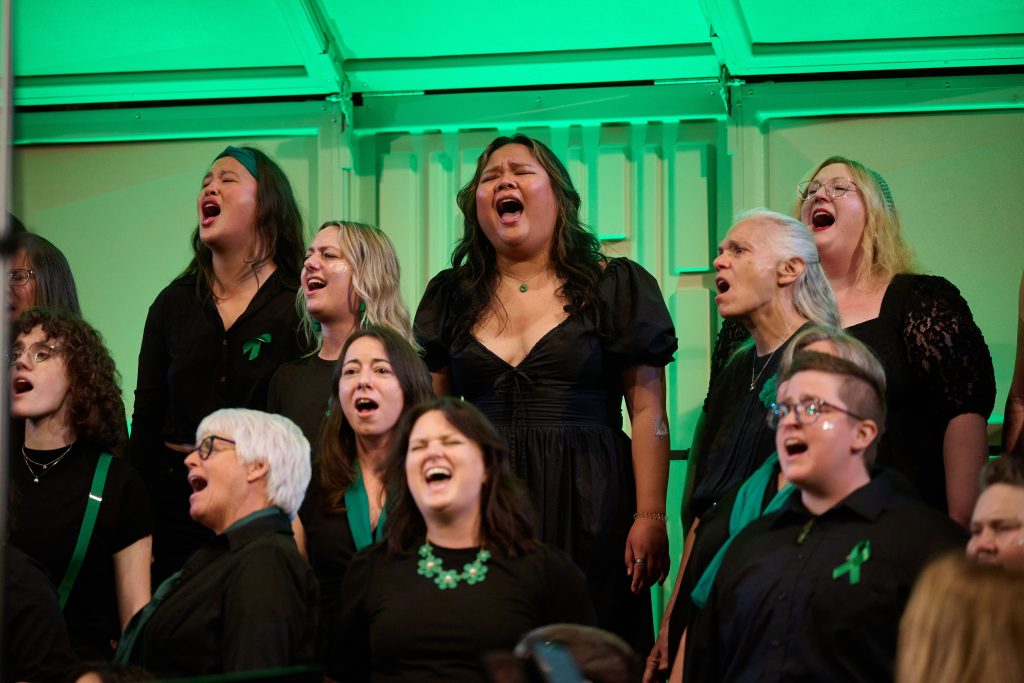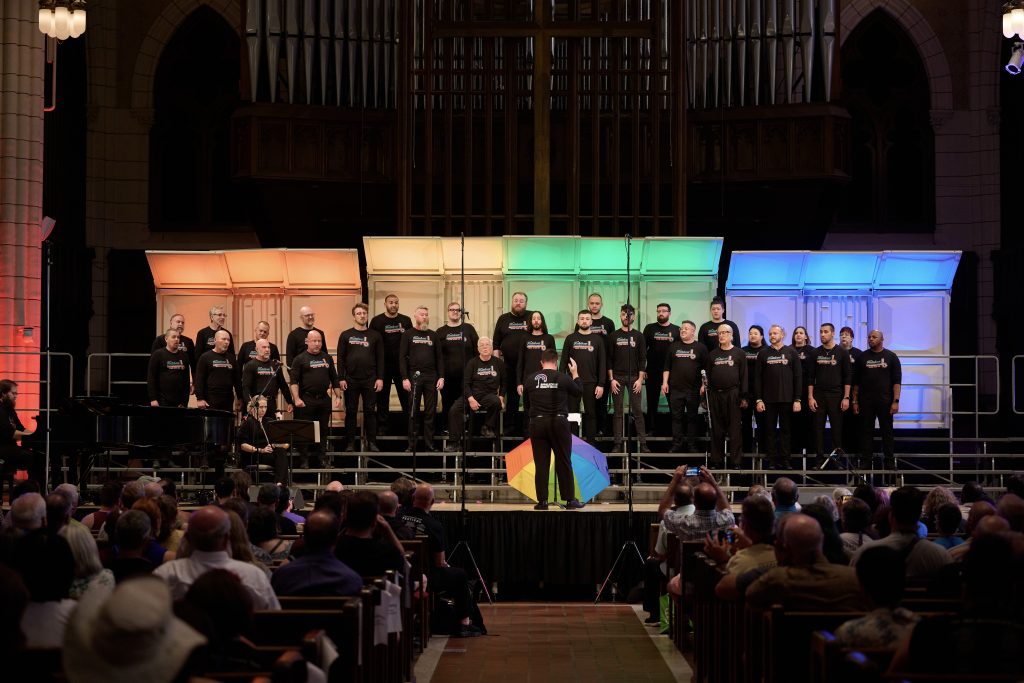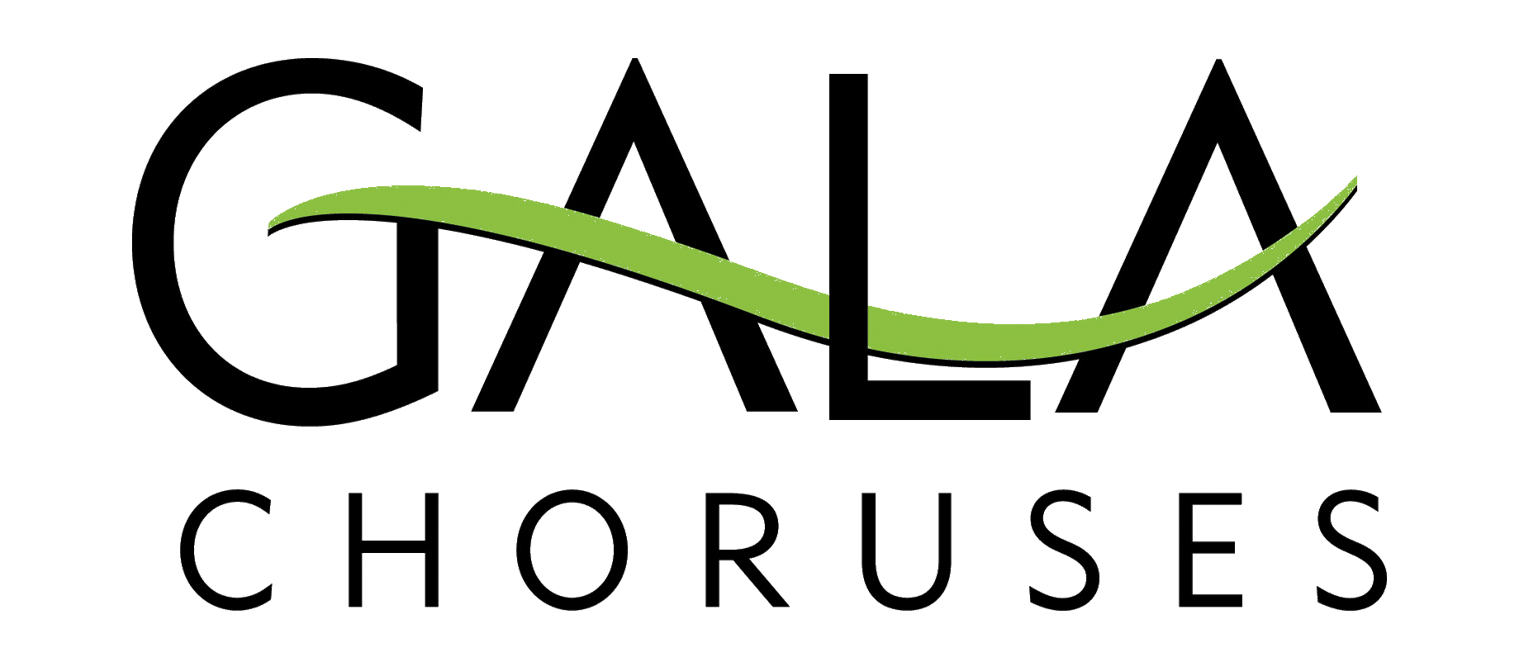By Sam Bullington
April 9, 2025
Founder and Artistic Director of Phoenix, Colorado’s Transgender Community Choir Sam Bullington shares reflections about chorus names, as many GALA Choruses consider name changes to reflect the expanding gender identities of their singers.

Chorus names can be an especially complex topic within GALA given that the structure of our choruses (women’s choruses, men’s choruses, mixed choruses) has historically rested on the gender binary. Many GALA choruses have been having conversations about the benefits and risks of changing their names, wanting their language and marketing to reflect contemporary understandings and language around gender and sexuality. At the recent GALA Leadership Symposium in Las Vegas, the New Harmony Task Force held a workshop called What’s In A Name? to explore this complicated issue.

While some GALA choruses are considering the option of selecting a new name to more accurately reflect their membership and to create a more welcoming invitation to people across the gender and sexuality spectrum, these conversations can be emotional and contentious, oftentimes along generational lines, so it is important to balance needs for change with respect for the histories of GALA’s member choruses, which were revolutionary in their founding missions and have transformed the lives of their members over decades.
While younger members can be impatient with the lack of change, wondering why chorus names haven’t been updated already, older members—often afraid of losing hard won safe spaces—can wonder why such changes need to be contemplated at all. Since lack of change can make some chorus members feel erased, and name changes can make other chorus members feel erased, finding common ground—through activities like intergenerational storytelling—is really important and everyone needs to feel that they have a voice in order for everyone to be able to move forward together. And sometimes choirs have to be willing for things to fall apart before they can move forward.
Since these conversations can be contentious, having an outside facilitator who can guide the process with neutrality is strongly advised. One thing that isn’t widely known among member choruses is that all GALA choruses have access to New Harmony facilitators free of charge as part of their GALA membership. So, while outside the GALA network such services can be expensive, there is help within the GALA network so choirs don’t need to put off initiating these conversations until they have a budget for it.
Choirs who have been through the process suggest 3 years as a realistic timeframe for exploring a name change. People need time to process their feelings, to integrate new information, and to develop different relationships. Choruses who have been through the process also advise to not be afraid of a big reaction. There may be threats to leave or to pull funding, but it is important enough to take those risks if members don’t feel like the name represents who they are. If a chorus seems out of step with contemporary reality and has difficulty attracting new members, it won’t survive. And organizations don’t know who’s not coming until they change, and new people start coming. As one chorus leader stated, “There are people who want to be there but don’t know that they can be.”
Knowing how best to convey that welcome can also be tricky. For instance, adding new identity categories to the alphabet can quickly become outdated (necessitating a new name change discussion) or unintentionally act as a welcoming message for some, while accidentally excluding others. A common remedy among choruses within the GALA network is to add a + or a tagline explicitly expanding the welcome beyond the community suggested by the name (for instance, “Promoting the Value of Q+ Elders and Allies” for Portland Sage Singers). When gendered language became problematic, choirs like Anna Crusis and the Denver Women’s Chorus shifted to the language of Feminist, an umbrella that is spacious enough to hold multiple gendered identities while specific enough to reflect the integrity of their choral mission. Some choruses have decided not to change their name, but to post a welcoming and supportive message on their website, for example specifically welcoming trans and nonbinary singers.
While it is important that our choruses reflect contemporary understandings of gender and sexuality, there are many ways that this can happen, whether or not a choir decides to change their name. For instance, for choruses who have a well-established “brand,” many are opting to update their mission statement rather than their name, preserving continuity while opening new doors (while others are asking “what are ways we can protect our legacy besides our name?”). Returning to the organizational mission statement can be a nourishing process, regardless of the outcome. Some choruses find motivation there to initiate challenging dialogues, while others—like the Appalachian Equality Chorus—found their new name by returning to the language of their mission statement.
Sometimes the resulting changes aren’t even major. One chorus spent 3 years to end up changing just 3 words in their marketing, but, found both the process and the outcome to be really important. Some choruses opt to change their logo instead of their name, as a softer introduction to change. One common move many GALA choruses, like Gateway Men’s Chorus, have made is to shift attention to voice part rather than gender—so referring to SSAA or “treble choirs” rather than “women’s choruses” and TTBB or “low voiced” choirs instead of “male singing range.” And many choruses have started affinity groups for sub communities within the choir (trans, BIPOC, neurodivergent, youth, elders), demonstrating their commitment to creating support for members not necessarily designated specifically in the chorus’s name.

While many choruses can get stuck anticipating consequences of a name change, what isn’t well known is the common positive results of a name change. Nearly all the choruses in the GALA network who went through a name change reported an increase in membership after the name change—for one chorus, 22 new singers came specifically due to the name change—and the average age of new members also dropped. For the Appalachian Equality Chorus (formerly Knoxville Gay Men’s Chorus), dropping the GMC in the South was a really big deal—but in the end, even those who had most vehemently threatened to leave decided to stay. It can be scary to rebrand, but it can have surprisingly positive results! Given our history of “women’s choruses, men’s choruses, and mixed choruses” it will be interesting to see how GALA —both as a holder of member choruses as well as the GALA Choruses organization itself—transforms and updates to reflect evolving understandings of the lived complexities of both gender and sexuality. Updating our thinking in creative ways and giving our storytelling a refresh are important first steps to ensuring that GALA choruses remain on the cutting edge for the next 40 years.
